
I didn't get to post this picture in October. Carrots from the garden are a treat. There are still some out there, under the melting snow. If I can't get them in the next week, I'll get them in the spring.

 There was a lot of singing. The Children's Choir performed their usual concerts, but they also sang for the Christian Women's Tea, and with the Encore Society in Traverse City. When the Encore Society performance was reviewed in the Record-Eagle, the reviewer had this to say about the Children's Choir:
There was a lot of singing. The Children's Choir performed their usual concerts, but they also sang for the Christian Women's Tea, and with the Encore Society in Traverse City. When the Encore Society performance was reviewed in the Record-Eagle, the reviewer had this to say about the Children's Choir: I like that quote. For me it is a reflection of what I like about Margaret Bell, our director. She has a keen sense of what is developmentally appropriate for kids and she spends a lot of time looking for music and arrangements that will let them shine. But, having done that, she expects them to shine -- to approach each rehearsal and performance with full attention, supporting each other with a workmanlike attitude.This is a group of singers whose purity of tone, maturity on stage and mastery of their material belies their young ages.
Dog Biscuits
1/4 cup hot water
8 boullion cubes
i Tablespoon baking yeast
1 1/2 cup tomato puree or tomato juice
1 teaspoon sugar
2 cups all purpose flour
1 1/2 cups whole wheat flour
2 cups wheat germ
Preheat the oven to 300 degrees. Mix the boullion cubes and hot water in a large bowl. Mix to dissolve the boullion cubes and then add the yeast. Let stand for 10 minutes.
Add the tomato puree, 1 cup all purpose flour, and the wheat germ. Mix well. Stir in the remaining flours to make a stiff dough.
Let the dough rest another 10 minutes, then turn it out onto a floured board. Knead it a few minutes, or until the flour looks mixed in. Roll out half with a rolling pin and cut into shapes. You can use a cookie cutter or cut out shapes with a knife.
Use a spatula to put the shapes onto a cookie sheet. Bake at 300 degrees for about one hour. When they are all baked, put them back into the turned off oven to dry, for 4 hours or overnight.
 The early winter has taken the absentee landowners by surprise. yesterday's Leland Report was filled with queries about whether the driveway needed plowing or the roof needed to be cleared of snow. This is a picture of Richard clearing the snow off our barn last Wednesday. The official snow total is over 70 inches, so far, but that was light powder over warm ground so in compressed quite a bit. Still, the snow that Richard cleared off the roof is more like what we usually see by the end of January.
The early winter has taken the absentee landowners by surprise. yesterday's Leland Report was filled with queries about whether the driveway needed plowing or the roof needed to be cleared of snow. This is a picture of Richard clearing the snow off our barn last Wednesday. The official snow total is over 70 inches, so far, but that was light powder over warm ground so in compressed quite a bit. Still, the snow that Richard cleared off the roof is more like what we usually see by the end of January. The weather map looked just like this for about a week: a band of snow just hanging over Leelanau County. By last week when the snow let up here and the TV news was blabbing about the "Killler Snow Storm" that gave the Northeast a foot of snow, we all sat in the breakroom and said "So what?"
The weather map looked just like this for about a week: a band of snow just hanging over Leelanau County. By last week when the snow let up here and the TV news was blabbing about the "Killler Snow Storm" that gave the Northeast a foot of snow, we all sat in the breakroom and said "So what?" The map at left, of Lake Michigan surface temps as of 12/07 gives us the reason for all this snow. Our unusually warm summer has left us with unusually warm lake temps, which feed the lake-effect snow. The darkest green is about 46 degrees, the dark blue is low 30's. When the lake is mostly dark blue, our lake effect snows will cease and there will be only the occasional "system snow" to contend with. I'll be checking the NOAA site frequently.
The map at left, of Lake Michigan surface temps as of 12/07 gives us the reason for all this snow. Our unusually warm summer has left us with unusually warm lake temps, which feed the lake-effect snow. The darkest green is about 46 degrees, the dark blue is low 30's. When the lake is mostly dark blue, our lake effect snows will cease and there will be only the occasional "system snow" to contend with. I'll be checking the NOAA site frequently.

Sisterly “Love”
My sister Shelagh is 20 months and one grade older than me, which, as one might imagine, makes us extremely close in age. It is easy to assume that this proximity in age would result in a loving sisterly relationship full of sleepovers and secrets and inside jokes. Unfortunately, that assumption is far from the truth. Although Shelagh and I have a semi-sisterly relationships today, we have not always been this close. In fact, our relationship now is quite different from the relationship we had when we were younger.
When Shelagh and I were little, we fought a lot. To be more specific, we physically fought a lot—by this, I mean that the younger, more emotion-driven-me would often attack my sister. Most disagreements resulted in me biting Shelagh, or me hitting Shelagh, or me punching Shelagh in the gut. Shelagh likes to recall the time when I chucked my favorite doll at her head, which apparently was quite painful. One my of favorite childhood memories involve Shelagh getting mad at me about something small, like who would put away the dishes or something, and me, in a sudden fit of rage, winding back and punching her in the stomach with all my might. She hadn’t even been mean to me, had just calmly expressed her opinion, but apparently I wasn’t into hearing her opinion. Nowadays, however, Shelagh and I rarely fight, instead maintaining a peaceful harmony that would make world leaders jealous. In the extremely rare case that we do fight, it is of the verbal variety rather than violent.
Younger years in the Och household were often spent exploring new ways to get the other sibling into trouble with the parents. It started out innocently enough, with one sibling simply blaming the other for something they did, like a muddy footprint or a mess left on the floor. However, this constant struggle came to its climax when we were probably about 7 and 9, and Shelagh decided that it would be a brilliant idea to write “I am Liz” on the wall, because obviously that is something that I would be stupid enough to do. Let me assure you that Shelagh and I have always had very distinct handwriting, so it was pretty clear (to me, at least), that Shelagh had written the graffiti, and that I was, therefore, innocent. Nothing was ever said by the parents, so I assumed that they figured the same, until about a month ago when I mentioned the incident to my mom. As it turns out that she had thought that I had written it all along, thus making Shelagh the ultimate winner when it comes to sisterly wars. Today, Shelagh and I are more often than not found on the same side of arguments, and we rarely incriminate each other, even for things we really did do. Though this sisterly love makes our relationship much stronger, I doubt my parents appreciate the newly formed alliance.
Today, it is not uncommon for Shelagh and me to call up each other for advice, tips, or just to talk. Contrary to the belief of a very small group of people, we have not always had this closeness. In fact, when we were younger, we hardly ever talked, though I suspect this was due largely in part to the fact that I suffered a severe speech impediment. Due to this embarrassing handicap, I was known to refer to Shelagh as “Seester,” a nickname my dear sister hardly appreciated. Though I learned to pronounce most word by Kindergarten, it wasn’t until at least middle school that Shelagh and I actually began to talk about things that mattered, like shoes and makeup. Now, Shelagh is the first person I call up with good news, bad news, or problems, and we can talk for hours argument (and speech-impediment) free.
As the younger sister, I tend to take my sister’s advice and follow her. This is one part of our relationship that has remained constant throughout the years. When we were younger, this willingness to trust my sister would sometimes cause less-than-satisfying results, such as the time when I “bit the tree”. We were at my great-grandma’s house, and Shelagh had invented this game where we would swing sideways on a swing and attempt to bite leaves off the nearby tree. At first Shelagh wouldn’t let me play, instead taunting me as she bit leaf after leaf off the tree, but after about a half hour of whining, I finally wore her down. Thinking I knew exactly what to do, I swung sideways and…bit the trunk of the tree, losing my second tooth in a bloody mouthful of tree bark. Although I am not naïve enough to do everything Shelagh tells me to today, I still trust her and value her advice, which, luckily for me, has become much more practical since the tree incident.
So, as Shelagh and I have grown up, it is safe to say that our relationship has grown from the blame-driven and violent type to a calmer and friendlier connection. The days of incriminating each other with graffiti and maiming each other with poor advice have fast been replaced by grown-up and sisterly things such as “serious conversations” and “helping each other out”. To an outsider (or from the medical perspective), this may appear to be an improvement, but I remain unconvinced. Despite the fighting, the tricks, and the lack of understandable conversation, Shelagh and I had a pretty good time during our childhood years. Perhaps I’m crazy, or maybe it is true that “the grass is always greener”, but for me, life was so much more fun back when we were younger.
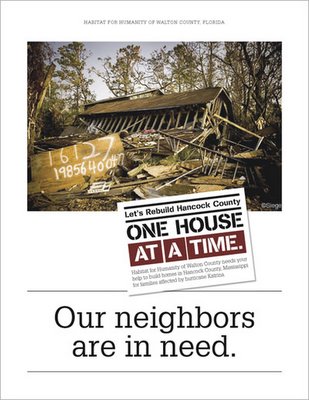

We used to name public buildings for heroes, and we're not doing that anymore, we're naming them after the highest bidder. What kind of message is that sending to kids?



Last week the Senate and House leadership put the legislature on notice of their intention to address the Heath Care and Retirement crisis facing school districts across the State by introducing legislation to help school districts provide affordable benefits. The legislation will impact current employee health as well as future employee retirement benefits.
Currently the legislature is on Thanksgiving recess but there is a commitment from leadership to vote on this legislation when they return on the 29th. This legislation is on a fast track and therefore YOUR ACTION IS IMPERATIVE.
Legislation has been introduced in two parts (House and Senate). The Senate will be addressing the Health Care while the House will be focusing on Retirement reform. Here is what you should know:
The Senate has introduced Senate Bills 895-898, which would make it easier for school districts to enter into health insurance pools or to self-insure as an individual district. The legislation includes the following:
* Mandates the release of school district claims data to allow better informed decisions by the school employees and administration regarding the benefits that employees use.
* Creates a new state managed catastrophic claims insurance that will result in lower premium costs for districts because of the greater purchasing power in pooling.
* Allows competitive health care purchasing through coalitions or pools.
* Allows for the creation of proactive state of the art programs to improve member health
It appears now that the House will not introduce new legislation but rather substitute language into a vehicle bill (House Bill 4947). This proposed legislation will bring about much needed reform in our public school retirement system. This bill currently is sitting on the House floor and will include the following:
* A graded health insurance policy that would give retirees a health insurance subsidy based on the number of years worked. This will cut out a number of loop holes that are currently used.
* A change that would prevent retirees from receiving free health insurance for years purchased from the system until they hit their thirtieth year. This does not prevent early retirement, just the free health insurance for up to the five years of purchased time.
* Language that would prevent an individual from purchasing time until they have accumulated two full years of service credit. This would prevent the purchase of time at a rate that is not financially sound for the retirement system.
* Note: This bill may also include a defined contribution provision which does not have MASA support at this time. We will work through the legislative process to address this.
Our timeline for hearings, votes, and passage is the first two weeks of December. After the first of the year it will become increasingly difficult to get movement on this type of reform.
Both of these pieces of legislation include provisions that your Legislation Committee and Council support. Together, they represent two of our strongest Legislative priorities. Your Government Relations office and many MASA members have worked hard to get to this point, now we need an all-out effort from our membership to bring home results that will begin to provide the critical cost containment relief so badly needed while protecting access to quality health care benefits for the next generations of school employees and retirees.
Q: What is the proposal?
A: The proposal allows school districts to create regional pools to purchase health care for current employees. The proposal also requires the state to establish a statewide fund to cover catastrophic claims. Premiums would be lowered because better claims, cost and quality data availability, as well as enhanced collective bargaining power, allowing school districts to better negotiate and seek competitive prices.
Q: Will school employees be forced to accept inferior benefits?
A: No, school employees can keep their benefits and collectively bargain for health care benefits in the future.
Q: Are school employees losing their right to collectively bargain for health care?
A: No. School employees and administrators can still negotiate and will bargain with more collective strength through larger employee pools.
Q: If savings don’t come from cutting school employee’s benefits or raising co-pays, where do they come from?
A: Savings will come from:
• More efficient administration;
• Getting better deals by pooling employees in regional pools;
• Providing school districts and employees with information to negotiate fair premiums and identify high-quality providers;
• Competitive bidding for health care;
• Creating a statewide fund to pay for catastrophic care.
Q: Will schools be forced to pool together?
A: No, they can determine whether pooling would be beneficial. Most school districts would see cost savings from pooling.
Q: How much money can be saved and instead go towards student’s needs?
A: The American Federation of Teacher-Michigan estimates that it will save $573 million over the first three years.
Q: Through collective bargaining, Michigan teachers have at times traded salary increases for health care benefits. Why should they change?
A: Pooling creates cost savings that can increase benefits, allow the hiring of more teachers or the funding of programs that had been eliminated without cutting employee benefits or pay.
Q: Why is the Legislature attempting to change the school employee’s benefits?
A: This proposal was offered by the American Federation of Teachers – Michigan, and supported by school administrators and school boards. The Legislature is only trying to be responsive to the education community.
Q: How much does health care cost schools?
A: A district’s annual health care costs comprise 12-18 percent of costs, or approximately $1000 per pupil. The total cost is projected to be $2.3 billion this year. On average, school employees covered under individual school district plans will cost $12,149 in 2005, while state employees covered under the consolidated state employee plan will cost only $9,212.
Q: Will this be a statewide or regional pool?
A: Schools will be able to choose whether to join regional pools or have their own separate plan.
Q: Is this an attack on MESSA?
A: No. MESSA can continue to provide health insurance for school districts. This proposal merely gives schools districts more choices and generates cost savings so those dollars go towards educating children.
Q: When is the Legislature going to lower the cost of its own health care benefits?
A: The Senate has already done so and the House of Representatives is considering several options to lower health care costs.
 Today is the first day of "Gun Season", short for Firearm Deer Season. I don't know who the guy in the photo is, but I suspect the photo was taken in northern Michigan in the early 1930's.
Today is the first day of "Gun Season", short for Firearm Deer Season. I don't know who the guy in the photo is, but I suspect the photo was taken in northern Michigan in the early 1930's.

The toys you see on TV are not really good toys. In the commercials they look like fun toys, but those kids aren't really playing. Those kids are actors and they are just pretending to have fun. Sometimes they are really good actors so the toys look like they're amazing --but if you get those toys they don't do what the commercial made it look like they do. The plane doesn't really fly. The doll doesn't really eat. They break, or the batteries run down, or there are so many pieces that it takes longer to clean up than it does to play.
Santa only brings toys that are going to be fun for a long time. He doesn't like toys that break or get their pieces lost. He likes to bring toys that can be whatever you need to pretend. He likes sturdy toys, and books that are good enough to read over and over.
The people that make TV toys have to spend so much money to make those commercials that they don't have enough money left to make really good toys; that's why Santa won't put those toys in his sleigh.
When it comes to testing, it's always great to hear a parent's perspective. Over at French Road Connections, Susan has written a must-read post about testing, teaching, and learning.It's nice to be read.
Q: We keep a small flock of chickens. Should we get rid of them?
A: No.
Bird flu is typically carried in the intestines of wild birds. These avian carriers often remain healthy but shed the virus in their feces, especially when they are under stress, thus transmitting it to other birds and also becoming ill themselves. In 1997, this bird flu virus roared onto the epidemiological scene by decimating poultry markets in Hong Kong and stunning health officials around the world by killing six people in that city. However, after extensive testing, scientists realized that this supposedly new virus had actually been identified decades earlier: It is a variant of the H5N1 virus that was first isolated in 1961 from terns in South Africa.
It is not known how this particular virus managed to disperse away from South Africa, but scientists suspect that it sequestered itself inside the intestines of migratory wild birds and hitchhiked around the world, as is typical for flu viruses. But this virus did not pose an international health problem until it reached eastern Asia, where huge concentrations of domestic poultry are found. Thus, combined with the effects of widespread poverty, particularly with its resulting overcrowding, poor hygiene and inadequate nutrition, H5N1 found itself in the ideal environment to enhance its lethality and transmissibility while also being presented with numerous opportunities to jump the species barrier into humans and other animal species.
Vietnam's economy may be growing rapidly, but the vast majority of its people are still small-scale farmers who share their living space with chickens and ducks. "The hinterland of Vietnam is, for all practical purposes, one huge free-roaming farm," says Anton Rychener, who heads the Hanoi office of the UN Food and Agriculture Organization (FAO). This, experts agree, provides the ideal breeding ground for deadly strains of flu, which are likely to emerge when viruses pass between different species of livestock and people, and exchange genetic material in the process.
Yet, the few epidemiologists working in Vietnam complained that the rest of the world is interested, not in doing public health research in Vietnam, but in collecting samples and then high-tailing it back to their first-world labs. Many people have been exposed to avian flu in Vietnam, but only a small percentage appear to have gotten sick. It would be very interesting to check both populations (human and poultry) for avian flu antibodies in an attempt to answer some very basic questions: Are only a few poultry infected, or have most poultry been exposed? Are birds that are kept in less stressful conditions more likely to resist infection? Are people simply not getting infected or are they having very mild symptoms? If they aren't getting infected, why not? Is the virus just not good at infecting humans, or have the humans gotten an immunity from somewhere?
One of the researchers in the Nature article noted that most of the people who died from avian flu were young. He wondered if the elders had acquired immunity from some previous wave of poultry flu. I read accounts of the Spanish flu epidemic that my grandparents lived through, and once again, it was the young people in the prime of life that seemed most susceptible. The theory is that the disease killed by overactivating the immune system, thus people with the most healthy immune systems were the most vulnerable. Yet, the similarities between the two situations are interesting. Humpoultry pountry have been living in close contact for so long (yes, evolving together) that it is inevitable that the two species would occasionally swap viruses. Will it turn out that contact with poultry results in a immunity (or even a partial immunity)against the next wave of flu virus?
In the last few days, President Bush has announced a new avian flu initiative. The epidemiologists at Effect Measure are glad to see avian flu getting attention and funding, but they note that the US has been systematically dismantling our public health infrastructure since the Reagan administration. The worry that, even if we can catch up from years of failing to fund basic research, we may lack the networks that will be needed to distribute vaccine or flu drugs, or even to effectively monitor the progress of an epidemic. In the end, any funding of public health initiatives is an improvement over the "less government is always better" philosophy.
***************************************************
So what does this mean to those of us who keep backyard poultry? The CDC's one-syllable answer, top of this page, to the only reporter who thought to ask the question, seems comical at best. Most of the information on poultry disease is aimed at farms with large indoor flocks. I found little information appropriate to a home flock situation; APHIS Tips on Biosecurity came as close as anything. They advocate housing birds away from foot traffic, quarantining new birds, disinfecting food and water equipment.
I will never be able to keep my chickens away from all contact with wild birds, but it seems that the wild birds I really have to worry about are ducks, geese, wild turkeys, and seagulls. It makes sense to dedicate a pair of boots for working around the chickens, and then avoid wearing that footwear to the piers, beaches, or golf courses where there is likely to be wild bird poop. My dirt floor barn, although it is great for keeping birds warm in winter and protected from predators, cannot be thoroughly disinfected. I may keep a much smaller flock next summer and house them in a structure that can either be cleaned or burned. I anticipate that at some point we will no longer be able to ship live poultry though the mail, so I am thinking about how to get along with that nasty rooster of mine, and how to encourage my hens to brood eggs next spring. I am culling hens this fall, keeping a handful of Partridge Rocks and Black Australorps as they have always been sturdy and healthy breeds. I need to make my whole setup leaner and more flexible, so I can change my methods as the situation unfolds.
The situation will unfold, as real science does, as a series of observations, guesses, experiments, and then more observations and guesses. All backyard poultry farmers are hands-on scientists, watching our birds, trying new methods, discarding what flops and refining what works, but always observing. We need to extend that home-grown pragmatism and demand that our tax dollars be spent on real science, where the theories spring from the observations, instead of visa versa.
Cornell Ornithology
The image at the top of the page is from The Red Jungle Fowl, posted by HS Wong of Kuala Lumpur. The Red Jungle Fowl (gallus gallus) is the original chicken, from which all domestic chicken breeds are descended.
 This is Anna's pumpkin, a cat-o-lantern carved from the "Chat Noir" poster that Shelagh left behind when she went to school. Anna drew the design and I carved it for her. The photography looks a little odd because I didn't drag the tripod out, but I like it. It's a nice opening for the Halloween Report:
This is Anna's pumpkin, a cat-o-lantern carved from the "Chat Noir" poster that Shelagh left behind when she went to school. Anna drew the design and I carved it for her. The photography looks a little odd because I didn't drag the tripod out, but I like it. It's a nice opening for the Halloween Report: I snapped this picture to show her how silly she looked, but seeing the picture only made her love the makeup more.
I snapped this picture to show her how silly she looked, but seeing the picture only made her love the makeup more.I was reminded of how, before I had teenagers, I used to think that middle school kids had stopped putting energy into dressing up for Halloween and were only out for candy. When I actually had kids that age, I found that they put enormous amounts of energy into their costumes. But their energy was spent on making sure that they wouldn't look silly, or uncool, or draw undue attention to themselves -- kind of the opposite of what the rest of the world thinks of Halloween. In the end, when Shelagh and Liz were middleschoolers, every girl tried to look like Britney and ended up looking slutty. I'm not sure what the boys were trying to do, but they ended up looking like muggers.
This year Liz and her friends went trick-or treating, even though they are seniors, with their friends in Suttons Bay. Liz was a fireman, Mary was a ninja, and Ellen was a gorilla. They no longer worry about looking foolish or transforming themselves into whatever their psyches need; they just grab whatever costume is available and go.
I had dressed as the chessboard's Black Queen for Friday's Halloween concert and Saturday's Halloween party at the casino. After 10 hours being the Queen on her feet I was ready to go trick or treating as Mom.
This image (courtesy of the Leland Report) shows the last stop of the night's trick or treating venture. Lori has hosted a Halloween party every year since Shelagh and Liz were toddlers. Some years it is the warming-up stop, where we can thaw out our fingers in front of her fire. We ate sloppy joes and cookies while the kids compared candy bags.
On the way to Lori's we passed the "All Saints Party" at the Old Art Building. A few years ago the Art Building hung Halloween decorations including a witch from a tree out by Main Street. The Lutherans lodged a protest, saying that this was promoting evil. This year they rented the building and hosted an alternative to trick-or-treating. Many kids just double dipped, first trick-or-treating then attending the party. As we walked by, it looked too well lit. The rented blow-up trampoline full of balls looked sad and boring, compared to the wonder of wandering the night and seeing dark shapes that turned out to be friends.
There were a few kids who didn't attend the school Halloween concert, either, because their parents think that Halloween is the work of the devil. I liked the article in Christianity Today, Hallowing Halloween. The author promotes Halloween as a time to mock the devil:
The one thing Satan cannot bear is to be a source of laughter. His pride is undermined by his own knowledge that his infernal rebellion against God is in reality an absurd farce. Hating laughter, he demands to be taken seriously. Indeed, I would say that those Christians who spend the night of October 31 filled with concern over what evils might be (and sometimes are) taking place are doing the very thing Lucifer wants them to do. By giving him this respect, such believers are giving his authority credence.
 My kids have always loved trick-or-treating because, as Liz said: "You get to walk around in the dark with Dad." I didn't see any evil, or even any mischief, except for myself and my hidden beer bottle. It is easy, this time of year, to forsake the outdoors and cozy up with the TV, where there is plenty of stuff to scare you.
My kids have always loved trick-or-treating because, as Liz said: "You get to walk around in the dark with Dad." I didn't see any evil, or even any mischief, except for myself and my hidden beer bottle. It is easy, this time of year, to forsake the outdoors and cozy up with the TV, where there is plenty of stuff to scare you.
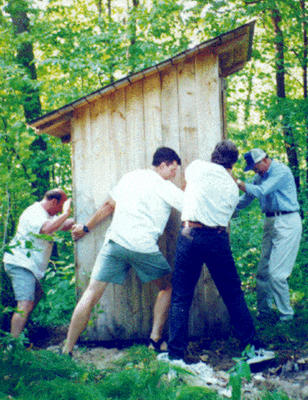
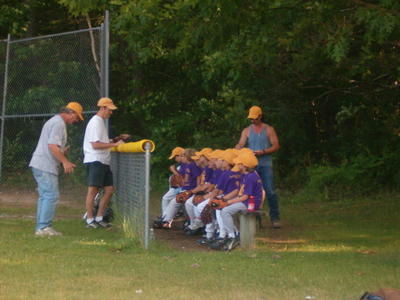
When a student writes and forms letters, he makes use of his graphomotor abilities. These special writing skills involve the coordination and control of the muscles at the end of his fingers. Some muscles are used to make a pencil move up and down, others to make the pencil move left and right, others to move it in a circular motion, etc. Since writing letters requires a combination of these movements, different muscles are used to form different letters. Not surprisingly, when students write, some have trouble getting their muscles to move in the correct way. The student’s first steps in forming letters involve identifying the letter to be written, using memory to recall what that letter should look like, and making and holding a mental picture of the letter. The student then "sends" signals from her brain to the finger muscles required to move the pencil and to form the desired letter. Finally, the student forms the letter in the right place on the paper.... Writing requires students to remember several things simultaneously (forming letters and words, using correct grammar and punctuation, recalling the ideas they want to write, etc.). If a student has a hard time retrieving any of this information from long or short-term memory, the entire writing process will be more difficult.Filling in bubbles is, of course, somewhat easier than writing, but still requires most of these skills.
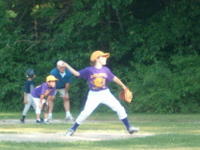 enthusiastically whacking the ball and trotting off towards third base. Last summer things finally seemed to be coming together for the kids. The were watching the ball, getting it under control, completing the throw to first base. Johnny as pitcher and Christian on first base were a particularly good combination.
enthusiastically whacking the ball and trotting off towards third base. Last summer things finally seemed to be coming together for the kids. The were watching the ball, getting it under control, completing the throw to first base. Johnny as pitcher and Christian on first base were a particularly good combination.
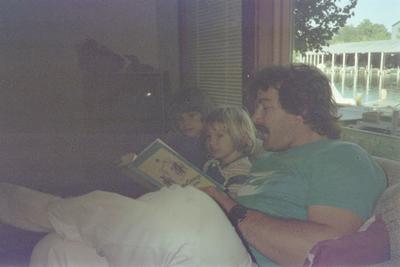 This was our first summer in Michigan, after we moved here from Hawaii. Richard is reading to Shelagh and Liz, except we called her Lizzy back then.
This was our first summer in Michigan, after we moved here from Hawaii. Richard is reading to Shelagh and Liz, except we called her Lizzy back then. Here they are on the front sidewalk of my folks' condo in Leland. Now Liz is taller than Shelagh, but she used to definitely be the younger sister.
Here they are on the front sidewalk of my folks' condo in Leland. Now Liz is taller than Shelagh, but she used to definitely be the younger sister.
 Liz was often mad at me because (she thought) I had decided to let Shelagh be born first. She so wanted to be the bigger sister. I would find Liz walking around muttering under her breath: "I hate my sister. I hate my sister..." I worried that those words would become her mantra, so I used to grab her and hold her and rock her and say "Your momma loves you dearly and she always will. Your momma loves you dearly and she always will....", trying to give her a new mantra.
Liz was often mad at me because (she thought) I had decided to let Shelagh be born first. She so wanted to be the bigger sister. I would find Liz walking around muttering under her breath: "I hate my sister. I hate my sister..." I worried that those words would become her mantra, so I used to grab her and hold her and rock her and say "Your momma loves you dearly and she always will. Your momma loves you dearly and she always will....", trying to give her a new mantra.
Now Shelagh and Liz are very close, getting on each others' nerves only occasionally.
Reading the news over the last few days, I have found out that I raised those two all wrong. I knew at the time that they were born too close together (19 months) so they were doomed to suffer from crippling sibling rivalry. When I went in for prenatal visits with Liz, the doctors and nurses told me every visit that 3 years between children was optimal, and asked me if I had ever heard about birth control.
I never bought them pacifiers (just one more thing to lose) and they often slept in our bed with us, usually with a head nestled under Dad's armpit for warmth. Now it turns out that sleeping with your parents is dangerous, and not buying a pacifier for your baby promotes SIDS. I'm unconvinced. It seems like pacifiers are always falling on the ground (or worse), getting lost, and just generally getting a lot more attention than they deserve.
But wait! There's More! I was supposed to have those kids toilet trained before they could walk!. It's an interesting idea, right up until they quote the mom who calls early toilet training "a gift in our relationship." I can't quite figure out what that means, but it sounds like something you would say if you were trying to present yourself (subtly, of course) as the best mother in the room.
I can't remember how or when any of my kids were toilet trained. (I vaguely remember when they learned to read, but even that was not a race. What makes a good life is not whether you could read when you were five, but wheteher you still love to read when you're 40.) I remember ignoring all kinds of unsolicited advice when my kids were young. I fear if I was raising babies now, I wouldn't be nearly as polite.
He found that the most religious democracies exhibited substantially higher degrees of social dysfunction than societies with larger percentages of atheists and agnostics. Of the nations studied, the U.S. — which has by far the largest percentage of people who take the Bible literally and express absolute belief in God (and the lowest percentage of atheists and agnostics) — also has by far the highest levels of homicide, abortion, teen pregnancy and sexually transmitted diseases.
Americans can and will help compensate for government's incompetence with millions of acts of individual enterprise and charity, as Katrina has shown. But that's not enough. We must ask tough questions: Will this generosity and compassion last in the absence of strong leadership? Will this Administration only ask for sacrifice in a time of crisis? Has dishonesty in politics degraded our national character to the point that we feel our dues have been paid as citizens with a one-time donation to the Red Cross?I worked the hurricane relief trailer yesterday and today dropped off eggs, vegetables, and dog food at a sick co-worker's because I know he's out of sick pay. No lights, no fanfare, just doing what needs to be done. Hurricane relief was all about eye contact; say hi to everyone you know and see if they stop and chat and maybe donate, or if they just say hi and keep walking. My favorite were the people who stopped on their way into the store, asked what was needed, and then bought it. I never demanded much, maybe an extra box of cereal or some Tylenol or diapers. It all adds up.
Today, let's you and I acknowledge what's really going on in this country. The truth is that this week, as a result of Katrina, many children languishing in shelters are getting vaccinations for the first time. Thousands of adults are seeing a doctor after going without a check-up for years. Illnesses lingering long before Katrina will be treated by a healthcare system that just weeks ago was indifferent, and will soon be indifferent again.
For the rest of the year this nation silently tolerates the injustice of 11 million children and over 30 million adults in desperate need of healthcare. We tolerate a chasm of race and class some would rather pretend does not exist. And ironically, right in the middle of this crisis the Administration quietly admitted that since they took office, six million of our fellow citizens have fallen into poverty. That's over five times the evacuated population of New Orleans. Their plight is no less tragic - no less worthy of our compassion and attention. We must demand something simple and humane: healthcare for all those in need - in all years at all times.

Looked at almost all Cops in precinct. Several had chemical burns on feet. They say "The Water" so you can hear the capital letters. "Black, green, and stinks like hell." Several were obviously worried about catching something. Wouldn't ask about it unless private.
Met a local MD. What a cowboy! He commandeered a white hearse from a funeral home, put red crosses on hood, doors, and liftgate with house paint from Home Depot.. "Riding forth to stave off death and disease!" Wouldn't shake hands "because of the epidemic." I asked what had gone epidemic. "I don't know yet, but it's coming soon." A character straight out of M*A*S*H.
Spirits are better--a shipment of ground beef & chicken breasts arrived from ATL. Big, big cop pulled out major-league smoker they use at Mardi Gras. Everyone was eating burgers and looked less careworn. Their #1 request? One night's sleep.
I can see now the significance of Jesus's washing feet. Foot care is a very profound way to show caring. It says "I care enough to touch these moist, stinky things for your benefit."
My name is Josh Norman. I am a reporter with the SunHerald of Biloxi, Mississippi. Last Sunday and Monday, I was in Biloxi when the eye of Hurricane Katrina passed over my head as a category 4.It was terrifying.Immediately after the storm, I went out and reported on the disaster. I met families destroyed, saw neighborhoods reduced to their concrete foundations, smelled death and dispair and heard the disbelief roll off of everyone's toungue. Disaster, perhaps, is therefore not strong enough of a word.What will be a disaster is a divided and bickering nation.I appreciate your work, Mr. Moore. I understand your viewpoint.I have voted democrat across the board since I started voting ten years ago. I could very easily be described as a liberal too...I was in the Peace Corps for Christ's sake.But I do not feel that now is the time to berate Bush. Now is not the time to bring him down a peg. He may be pathetic, he may be barely able to actually help, but any help he can get down this way is desperately needed. By causing him to divert energies to defend his frequently spotty record people who attack him are diverting his energies away from here.And, I feel like you and others who attack him are diverting your energies away from here too.This disaster is about people. It's about the mother who came home from work and found her baby and husband had drowned in her living room. It's about the casino janitor who came home and found his daughter's baby photos missing - his house had been reduced to a slab - much the same way Hurricane Camille had done to his baby photos.It's about the firemen who had to swim out of their fire station, had their homes leveled, and are still working 20-hour days, 7 days a week.We need help here. Now. Listening to the political bashing, frankly, makes me concerned. I know Bush did wrong. I know there was a major fuck up. Now is not the time for finding of what that fuck up was.Have you spent as much time helping the people of South Mississippi and Louisiana get clothing, medicine, food and water as you have figuring out what Bush did wrong?-Josh